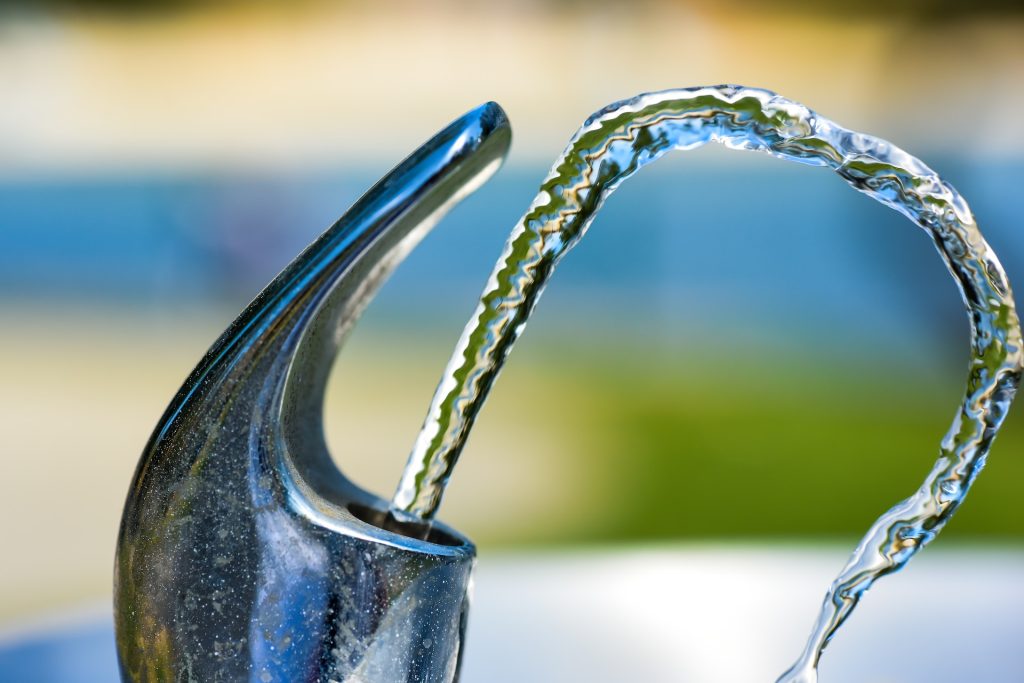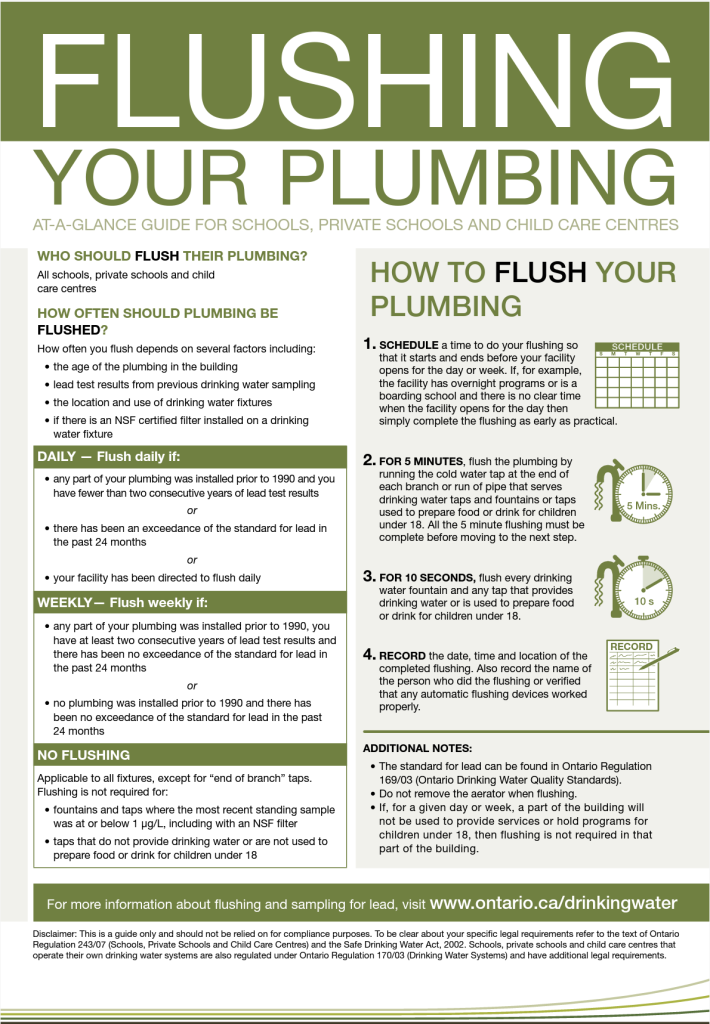6.12 Safe Drinking Water


Ontario.ca. Used under fair dealing. All Rights Reserved.
Click the image to view the (PDF) poster.
Early years settings conduct annual testing for lead in their water supply to ensure the amount of lead is minimal in drinking water served to young children. Studies have revealed that lead is present in many products and is dangerous for the development of young children (WHO, 2022). Early years settings are careful to reduce the number of products containing lead as well ensuring they regularly flush and test their water sources for traces of lead.
Lead flushing policies and procedures will be introduced during an orientation for employees, students, and volunteers before they begin engaging in an early years setting. Employees are tasked with flushing the water supply for lead at the beginning of the business day. The schedule for flushing varies depending on the site and the age of the plumbing. Flushing procedures must be documented and annual sampling is tested by a lab with results sent to the Ministry of Environment to ensure compliance.
Typically only the drinking water sources are tested. This may include kitchen sinks where water is used for food preparation and to source drinking water, along with any water fountains. Licensees must indicate which water sources are safe for drinking for children under the age of 18 in their water flushing policies.
Read
Read the follow information regarding flushing for lead and lead sampling in early years settings.

